No conversation about strong female characters in anime –or film for that matter — would be complete without bringing up the diverse array of characters Studio Ghibli has gifted us over the decades. Fans and critics alike have been praising the animation powerhouse for its heroines since the 1980s, and who can blame them? After all, these timeless heroines are the reason Ghibli is now a household name. HBO Max recently rebranded to just Max and while there have been many changes in the process, thankfully, the Ghibli library remains on the service, keeping these films readily accessible for US audiences.
Fans know a Ghibli heroine when we see one, but explaining why they resonate so well with moviegoers new to their work takes a bit more effort. So, we’ve decided to take a trip down memory lane to find the answer. Along the way, we’ll break down the various components that have contributed to these ladies’ long-lasting success and ultimately explain why we have no choice but to stan these ten powerhouses.
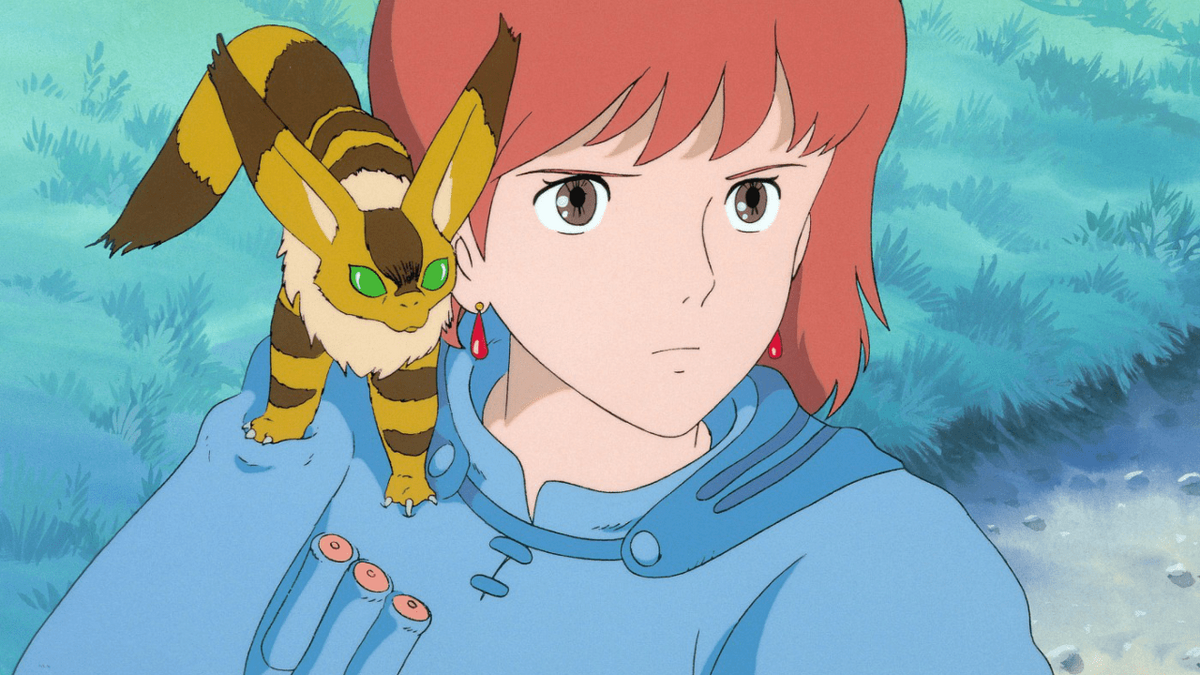
Nausicaä of the Valley of the Wind (1984) technically predates Studio Ghibli, but it’s been included in Ghibli collections before and is among Max’s lineup. Besides, it’s undeniable that this film’s success is what made the company possible, and it’s no wonder. The film’s heroine, Nausicaä, with her infectious love of nature and the animal kingdom served as the blueprint for future heroines.
Nausicaä is the first to truly embody Ghibli’s spirit for environmentalism. The post-apocalyptic world she lives in has literally evolved to kill humans, sprouting a vast poisonous forest called the Sea of Corruption. Most want to do away with the forest for good, but not Nausicaä — not even when her father King Jhil falls ill from its spores.
But Nausicaä’s no tree-hugging, human-hating hippie or power-hungry princess after her father’s crown. In fact, one of Nausicaä’s most charming traits is her love of life in all its forms. It’s what drives her to pull off miraculous feats like calming a rampaging Ohmu without a weapon and using spores from the Sea of Corruption to grow non-poisonous plants in hopes of curing her father’s illness.
“Many of my movies have strong female leads–brave, self-sufficient girls that don’t think twice about fighting for what they believe with all their heart. They’ll need a friend, or a supporter, but never a savior. Any woman is just as capable of being a hero as any man”– Hayao Miyazaki, 2013
Despite all her positive traits, Nausicaä isn’t without flaws. She doesn’t break into song or try to be the bigger person when faced with a tragedy, instead allowing her emotions to consume her. This leads her to make a choice so dark that it makes her question her values and what she is capable of. It’s a low-point for Nausicaä, but a necessary one.
Up until that moment, Nausicaä is perfect. She fixes her subjects’ windmills, can ride the wind with the best of them, and can seemingly tame any beast. These actions make her a good person, but not a relatable one. It’s when we get that glimpse of the flawed girl behind the mask that Nausicaä finally seems real, like she could be any one of us. (After all, who hasn’t done something they’ve immediately regretted?) The fact that she fights on behalf of Mother Nature is just icing on the cake.
We stan an environmentally conscious queen.
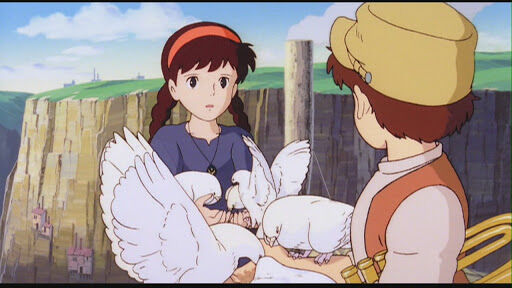
Ghibli’s first official film, Castle in the Sky (1986), ditches the serious tone of Nausicaä for a more playful and comedic take on the future. But the stakes in this film are still high, in the clouds even, thanks to the film’s heroine, 13-year-old Sheeta. Born in the country, Sheeta seems as normal as any girl, and for the most part, she is. Well, if you exclude the part about her being descended from a royal family who ruled a technologically advanced floating castle in the sky called Laputa.
But Sheeta doesn’t act like a noble. In fact, she prefers the quiet life she led on her late parents’ farm before the military and the Dola Gang each decided to try to swipe the magical heirloom around her neck. The heirloom that serves as the key to accessing the kingdom of Laputa and all its treasures. But Sheeta’s no Nausicaä. She doesn’t have the skills to fight them off or evade her attackers on her own. In fact, when she and her new friend Pazu find themselves cornered by the Dola Gang, it takes everything Sheeta has to knock a pair of pirates off a moving train with a shovel.
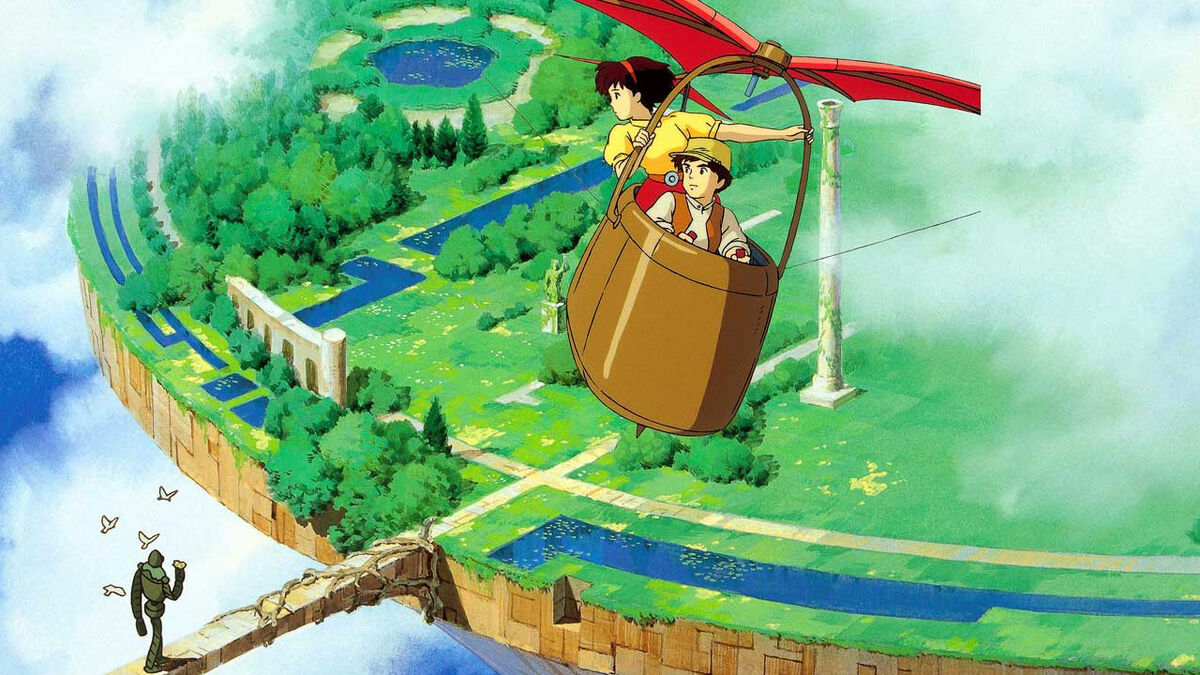
But what she lacks in strength, she makes up for in courage. The antics she gets into would put any self-respecting pirate to shame. Plus, she has no problem putting herself on the line to protect a friend. But what makes Sheeta so great is how she always makes decisions for the greater good–even if the choices she makes end up burning her in the end. It’s all worth it to her if it means that people can live freely and in peace.
Perhaps that’s why she isn’t tempted by the power that Laputa offers, despite it being the only connection to the family that she lost. She doesn’t need to live out a pseudo Atlantean fantasy in the sky. Sheeta is perfectly fine being a nobody, embracing the quiet mountain girl she’s been all along. There’s nothing more relatable and courageous than being comfortable in your own skin.
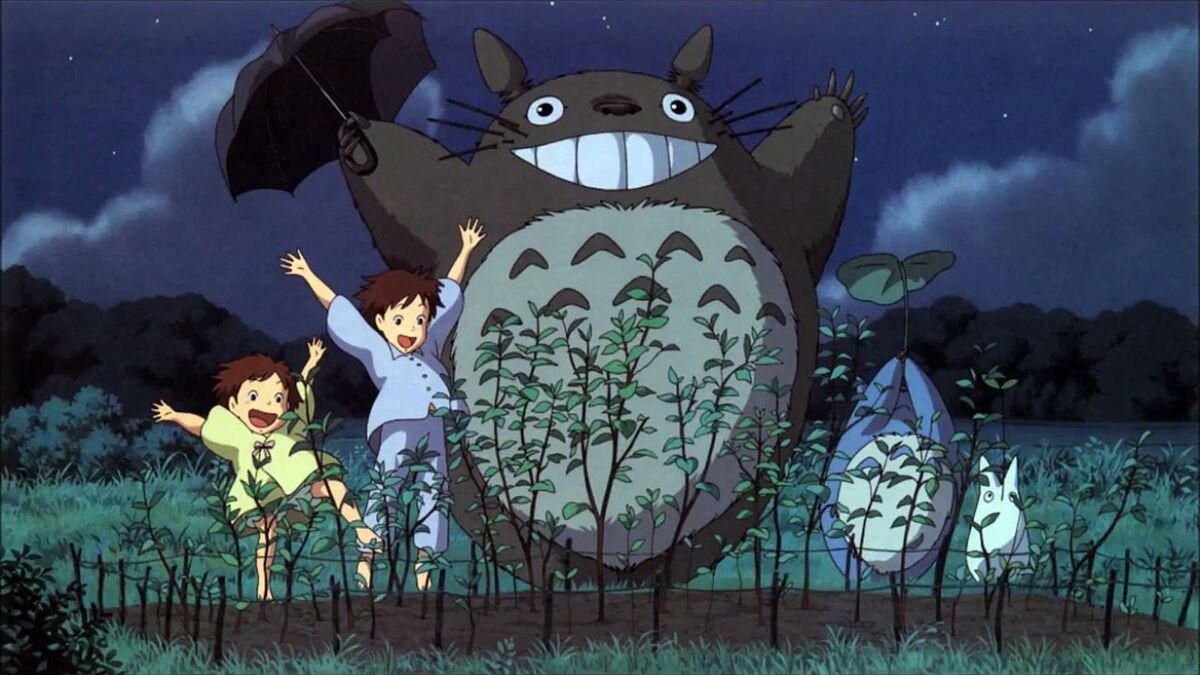
Before Elsa and Anna, there was My Neighbor Totoro’s (1988) Satsuki and Mei, a pair of siblings who move to a new home in the countryside with their father while their mother lies ill in the hospital. Surprisingly, when we first meet the two girls, they aren’t sulking in a corner, but running around and exploring every nook and cranny of their brand new house. From tiny tadpole-filled streams to the soot sprites in their home, there’s nothing that won’t amaze these girls and spark their curiosity.
The duo are fearless. Not because they’re particularly brave, but because–as anyone who’s been around children can tell you–they don’t know any better. But that’s what makes them so lovable. The weight of the world hasn’t crushed them yet, so they maintain their innocence and wonder. Without it, they may have never met Totoro, the plump forest spirit who wows them with its magic, taking them on flights through the sky and teaching them the ritual to sprout plants from its special seeds. None of it seems logical–especially not Catbus–but when viewed through Satuski and Mei’s eyes, it’s impossible not to get swept up in the magic of it all right along with them.
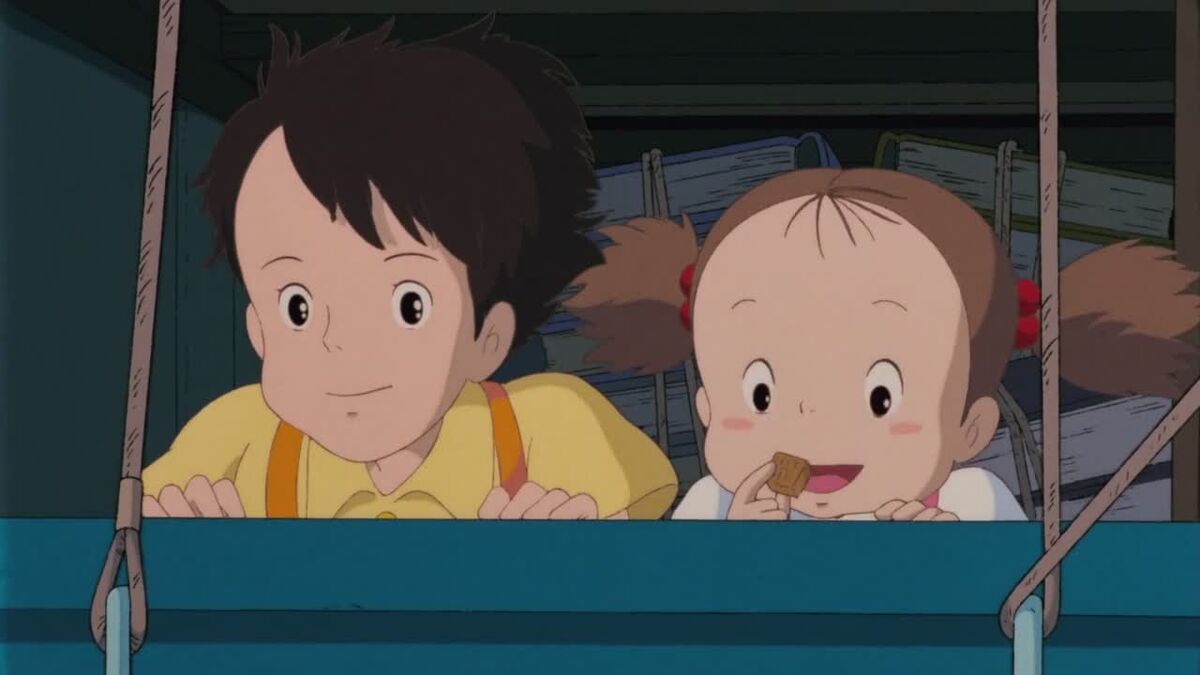
But Satuski and Mei’s bond, like most relationships, isn’t without problems. With their mother in the hospital and their father constantly away for work, the two rely on each other more than ever and their relationship becomes more like that of a parent and child–with Satsuki taking on more of a parental role. But no matter how mature Satsuki may seem, she’s still a kid trying to process some pretty heavy what-ifs, including what she would do if she lost her mother. And as much as Mei relies on Satsuki, it’s clear that she’s no replacement for their mother.
The way that the duo cling to and repel each other is what gives this story its heart. Through every disagreement, you can’t help but to hope they’ll find a way back to each other. It perfectly captures that imperfect love that family members share during times of grief and stress. When you each want nothing more but to be alone side-by-side. After all, it’s easier to manage with a loved one by your side—and even easier if you have a cute forest spirit watching over you.
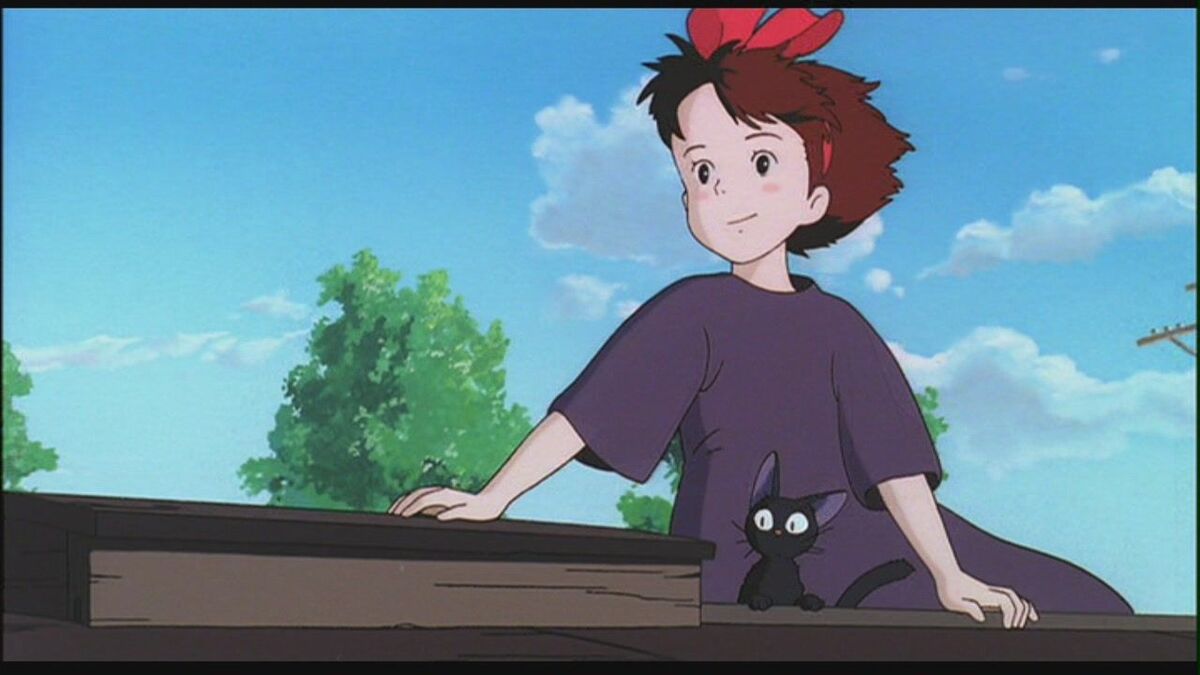
It’s clear from the moment we meet Kiki in Kiki’s Delivery Service (1989) that this is a girl who knows what she wants. When she has a goal in mind, she chases after it without a second thought, such as when she decides on a whim to leave her parents’ home earlier than expected for witch training. But in her haste to prove her self-sufficiency, Kiki often gets ahead of herself.
Kiki is as relatable as a teenager gets. She thinks she knows everything and pretends to have life all figured out. But in reality, she’s just as scared and insecure as everyone else. When she finally finds the city she wants to work in for the next year as their witch, she finds herself unprepared for big city life. She nearly gets a traffic citation for flying into oncoming traffic, the local girls make fun of her traditional black dress, and even worse, the citizens don’t seem to care for witches. The world is a big place, and for all her bravado, Kiki is still just a teenage girl trying to make it on her own.
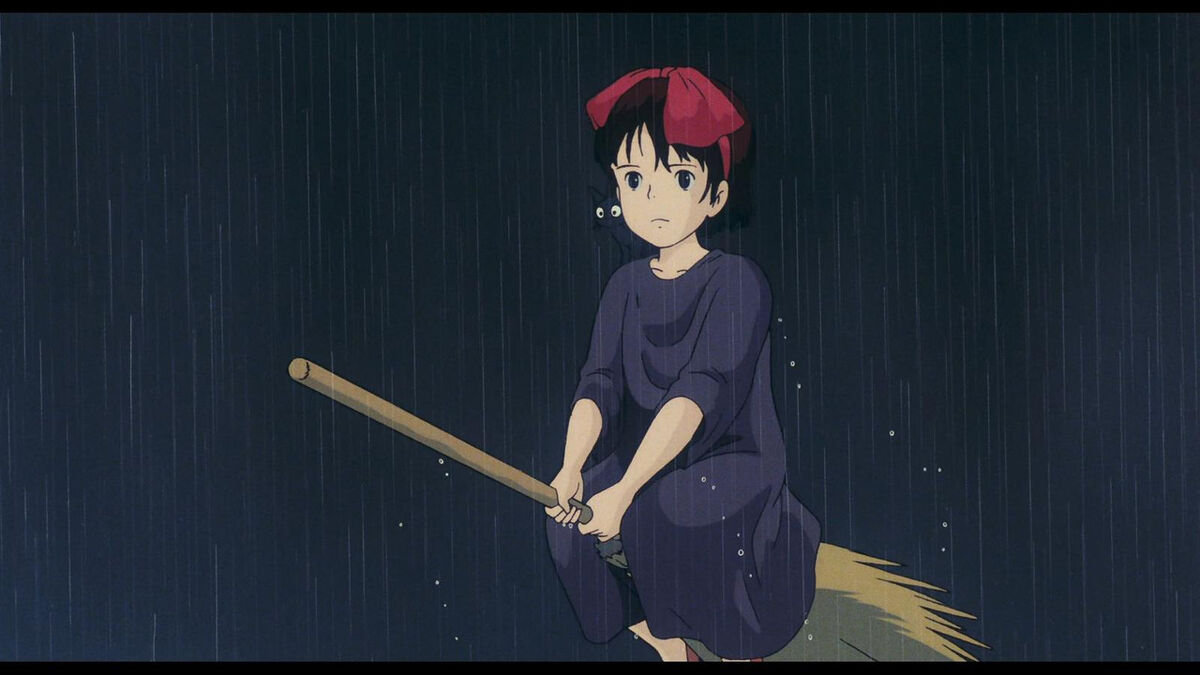
But Kiki, the personification of “fake it until you make it,” doesn’t give up, even when her cat familiar Jiji suggests they look for a more accepting town. She eventually decides to open up a delivery service, but finds that work alone doesn’t make her feel whole. Like most girls her age she wants to have a social life, but she avoids taking risks on friendships because she’s self-conscious about her attire. So rather than confront her low self-esteem, Kiki does what any of us would do–she throws herself into her work to avoid the problem.
It takes a major loss for Kiki to have the existential crisis she needs to finally admit that she’s struggling and needs help. Kiki learning to tuck her tail and lean on others shows growth. She’s no longer the hard-headed girl willing to fly into a storm with a subpar broom just to prove that the one she built is sturdy. She discovers that true confidence doesn’t stem from perfectionism but from accepting yourself and all your faults. A timeless lesson indeed.
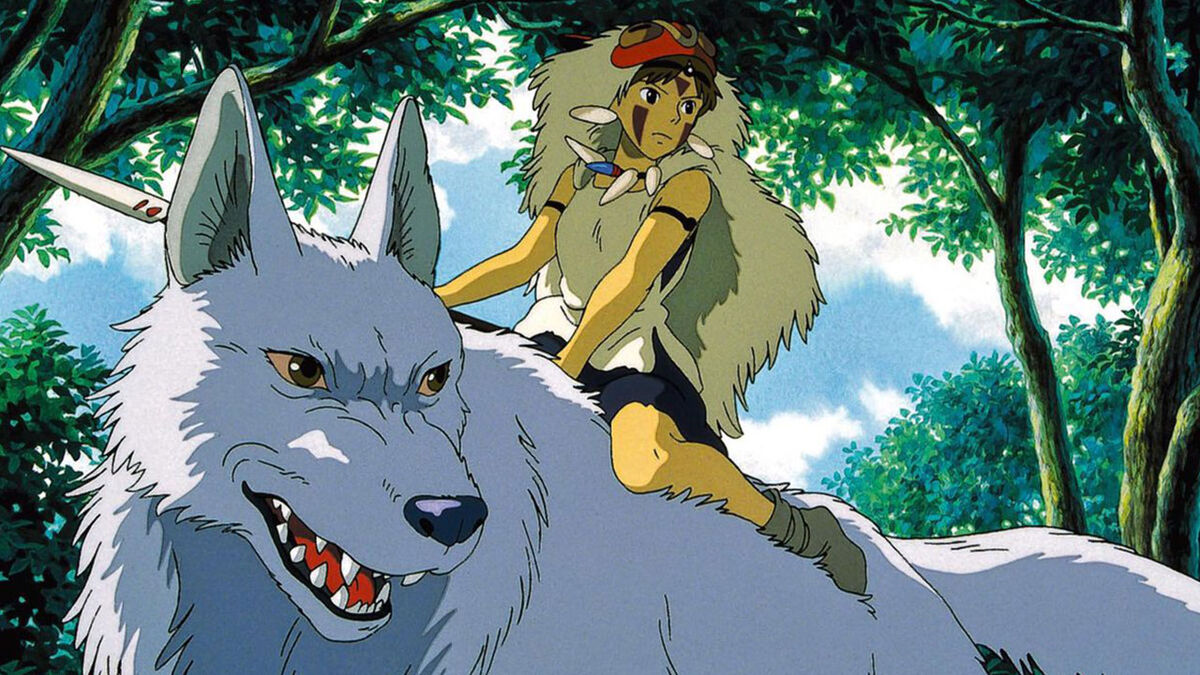
Most of us know the sting of being betrayed by someone we trusted. In the case of San from Princess Mononoke (1997), it wasn’t a single person who betrayed her, but humanity itself. When she was just a baby, the wolf god Moro attacked her parents for destroying the forest. In order to save their own skin, they threw their daughter in Moro’s path as they fled. As a result, San grows up as a daughter of the Moro Clan and develops an intense hatred and distrust of humans.
But what makes San truly compelling is her strong sense of justice and loyalty when it comes to her forest brethren and sistren. The forest has been wronged. Lady Eboshi and the residents of Irontown have been clearing the forest to obtain more iron ore, which they use to fashion guns to keep the local animal gods at bay. With her home and family under constant attack, San makes it her life mission to take out the woman causing the forest so much pain. And she risks her life several times to make it happen, even showing up alone to face Eboshi in Irontown–where everyone is armed to the teeth–and later taking part in a suicide mission to reclaim the land from humans.
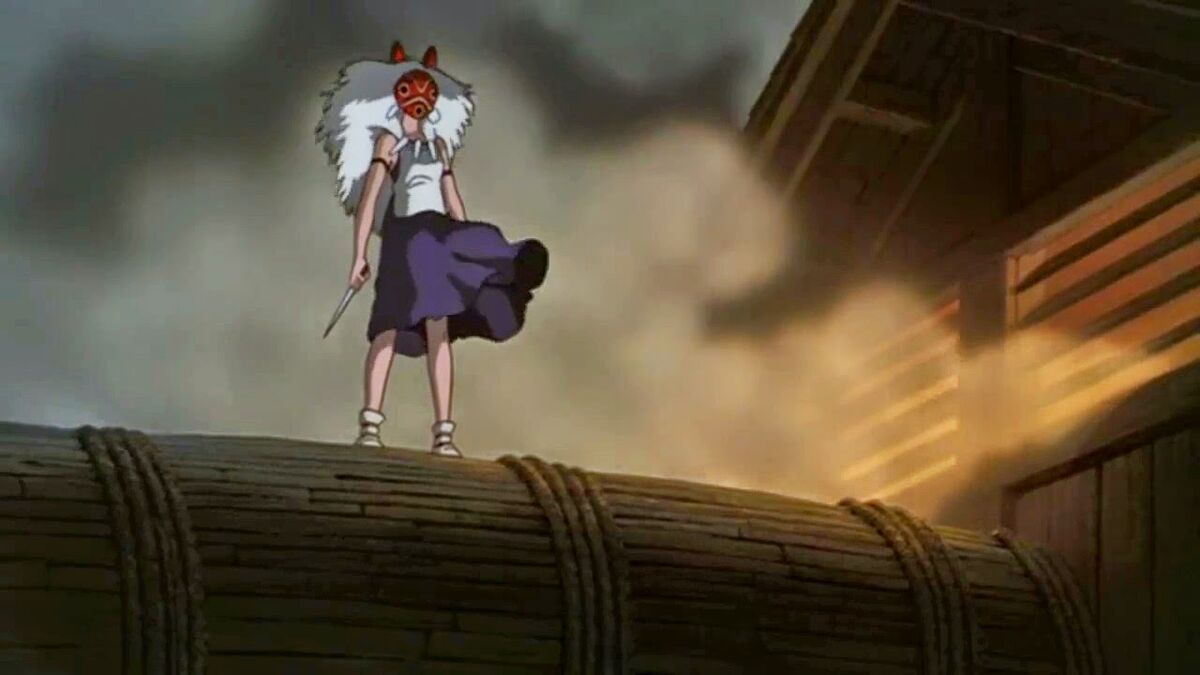
There’s a time for diplomacy and there’s a time for justice, and when the woman you’re at odds with wants to blast the head off the Forest Spirit, the literal god of life and death itself, who keeps the forest you know and love alive, well, you get to hold a grudge. But then Ashitaka shows up and tries to get the two warring women to see both sides, and for a moment, it seems like San’s arc might involve abandoning her mission for a chance at love.
Lucky for us San isn’t waiting on Prince Charming to come and save her and while she comes to respect Ashitaka, she never forsakes her values for his own. She is her own person and no boy, no matter how cute or cool he is, can change who she is at her core. You’ve got to admire the girl for sticking to her guns.
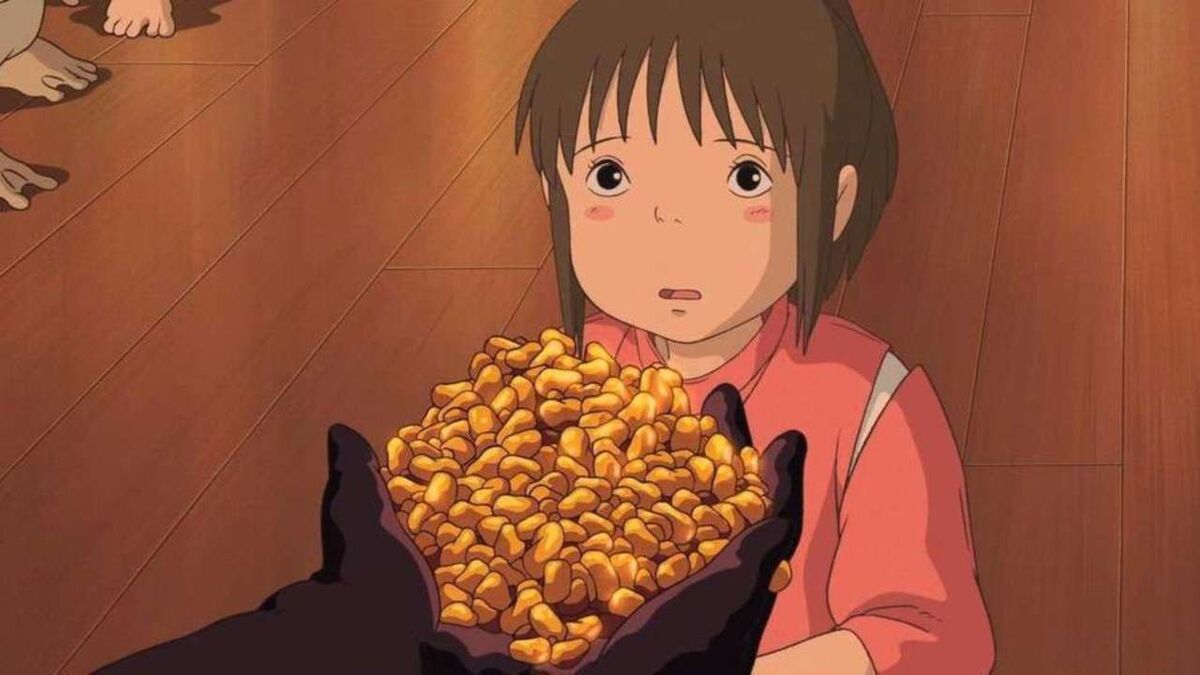
Spirited Away (2001) opens with Chihiro in the backseat of her parents’ car as they arrive in their new town. However, unlike Satsuki and Mei, Chihiro isn’t excited about the move nor is she the least bit curious about the spirit world. In fact, when her parents decide to go see what’s on the other end of a creepy tunnel (totally normal stuff here), she initially refuses to follow. But no kid wants to be left alone in the middle of the road, so she joins them, trembling all the way.
They find what they believe to be an abandoned theme park, but when Chihiro’s parents sit down at an unmanned stall to eat the mountains of food sitting out, things get weird quick. Not only do her parents turn into pigs, the entire place seems to suddenly spring to life. Chihiro’s refusal to give in to gluttony saves her from her parent’s fate.
When Chihiro finally gets a job in the spirit world, it’s easy to see that Chihiro hasn’t done any real housework, as she’s the slowest at cleaning the floors and barely has the strength to wring a towel dry. Not to mention she’s also a klutz. But Chihiro does possess one trait that her coworkers lack — selflessness.
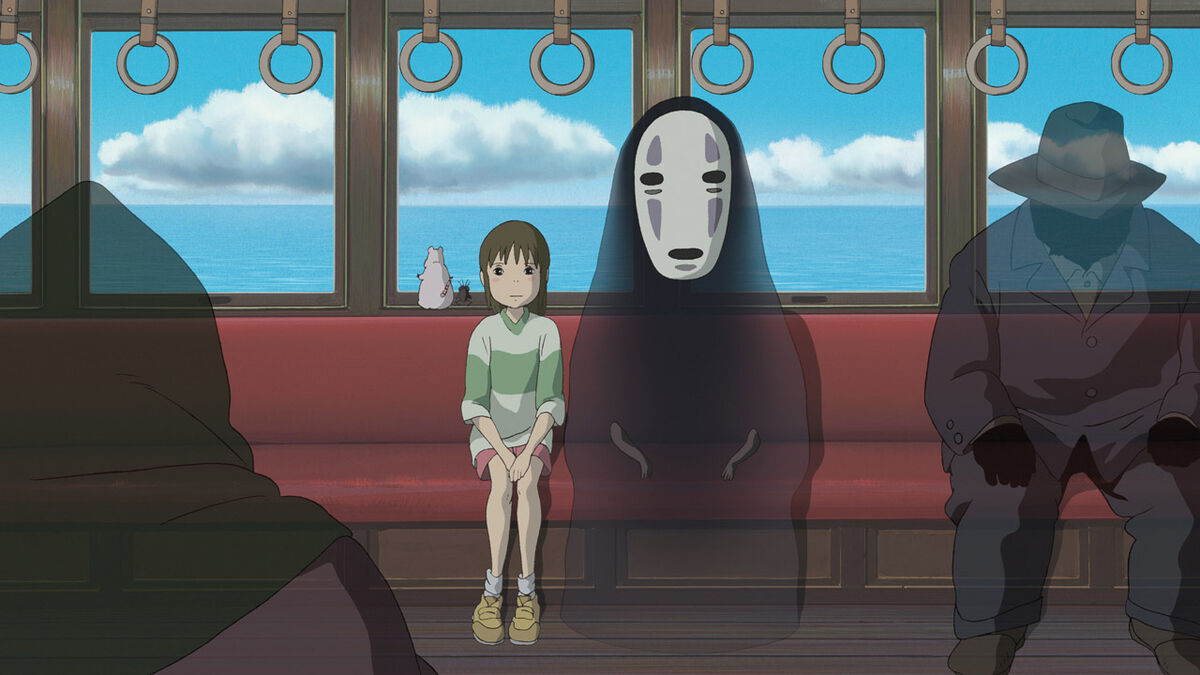
Chihiro never gives in to greed or places her own needs above others’. She even gives top-notch customer service to an extremely filthy and smelly spirit who makes all the employees at the bath house recoil in disgust. But Chihiro sticks with it and earns a reward far greater than the gold the spirit leaves behind—a glimmer of hope that might help her save her parents. A prize she wouldn’t have obtained had she not been so compassionate.
The spirit world is full of gluttony, greed, and excess, but Chihiro doesn’t care about any of that. She just wants to be reunited with her parents. Her selflessness is what makes her stand out among the colorful cast of characters in Hayao Miyazaki‘s world. Seemingly the only person with morals in this topsy-turvy world, Chihiro is a shining example of remaining resolute in a nefarious world that seems to be hell-bent on dragging you down to its level.
Howl’s Moving Castle’s (2004) heroine Sophie is perfectly content living the rest of her humdrum life as a hatter. But when she unknowingly encounters the wizard Howl, she incurs the wrath of the Witch of the Waste, who places a curse on Sophie that turns her into an old woman. Even worse, she can’t tell anyone about the spell.
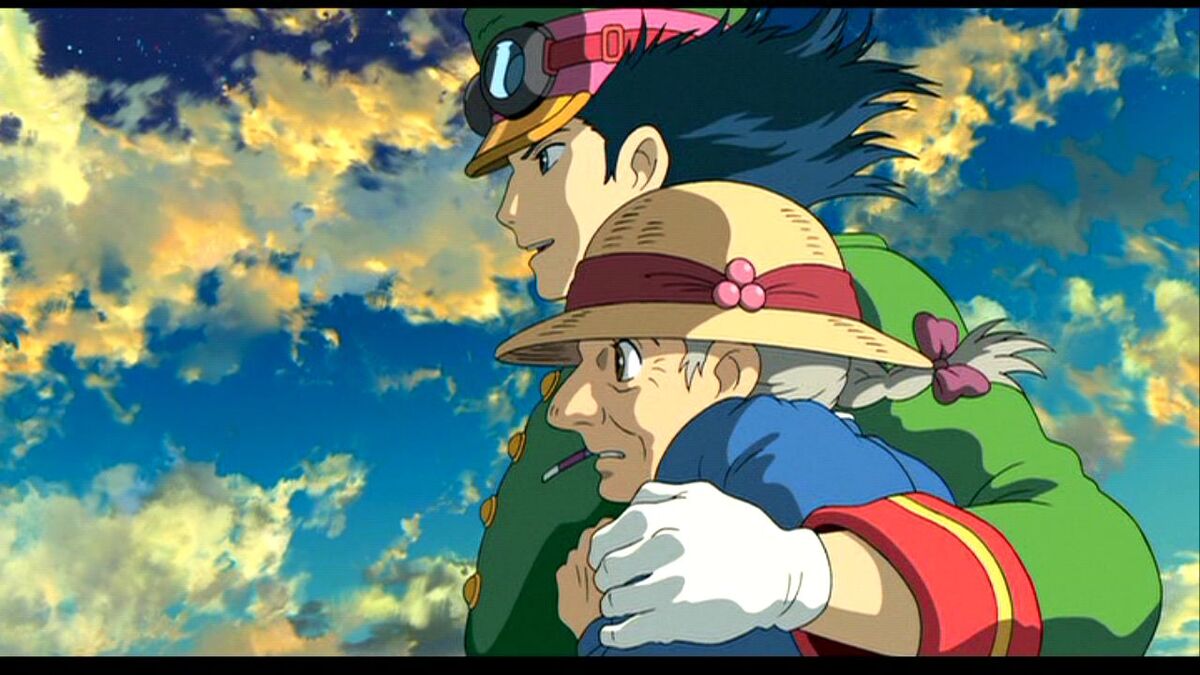
Ironically, once Sophie becomes an old woman, she goes from being dull and dutiful to adventurous and energetic as she leaves her hometown in search of a cure. She ventures into a valley said to be full of witches and wizards without a second thought and eventually gains employment in Howl’s moving castle as a cleaning lady. The castle, which lacks a female presence, is stereotypically messy. But Sophie manages to find a purpose in cleaning, organizing, and reorganizing the space. What initially is perceived as a nuisance, particularly by Howl who dyes his hair orange as a result of Sophie mixing up his potions, eventually forms the bonds needed for this ragtag group to become a family. A family much closer than the one Sophie left behind. (Her mother did track Sophie down on the villain Suliman’s behalf after all). And it’s all thanks to Sophie!
Sophie also comes to appreciate the little things in life that she used to take for granted, like mountains and the ocean–the latter of which she had never seen before. She also pulls off amazing feats like getting Calcifer, the fire demon who moves the castle and only answers to Howl, to obey her and flying the getaway vehicle after Howl makes a powerful enemy. In her old age, she discovers how to be young again and learns the value of interpersonal relationships. This shift in perspective is what allows Sophie to ultimately forgive the Witch of the Waste (life’s too short for grudges) and follow her heart and pursue Howl. But Sophie’s new lease on life has a secondary effect as well, showing us that the gap between the elderly and the young isn’t as stark as we think.
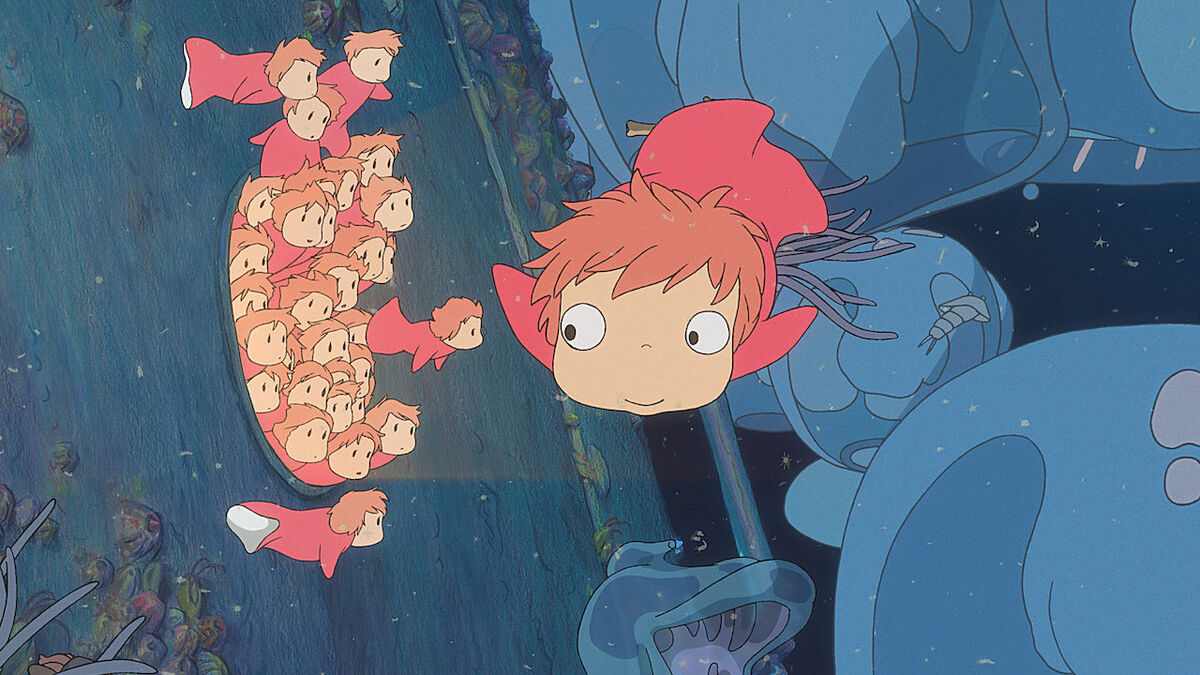
Ponyo from the 2008 film of the same name is a bit different than the other heroines on this list. She doesn’t start out as a little girl, but as a goldfish who dreams of being one. But in true kids’ movie fashion, her overprotective, human-hating wizard/scientist father, Fujimoto, wants nothing more than to keep her from fulfilling her dream. So, with the help of her younger siblings, Ponyo escapes from her father’s clutches and washes up on the shore in front of 5-year-old Sōsuke’s house. When the boy frees her from the glass she’s trapped in, the two form a bond to last for the ages.
But it’s not long before Ponyo is captured by Fujimoto, making her even more determined to be human. She breaks free again, but this time releases some terrible magic that disrupts the balance of the natural world and unleashes a fearsome tsunami. Ponyo’s actions not only puts all the ships at sea in danger– including Sōsuke’s dad’s ship–it also puts his mom and the rest of the town in harm’s way as well. However, all of this is lost on Ponyo, who is finally able to take on a human form but still needs to learn about what it means to be human. A girl’s gotta have her priorities.
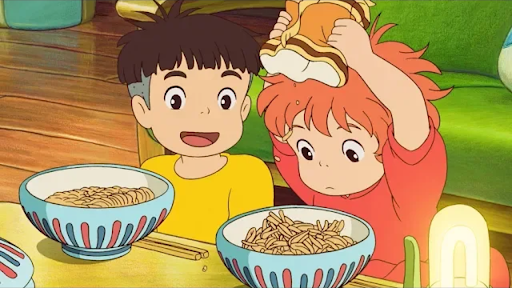
Nature continues to fall apart in Ponyo’s absence, with the moon falling out of orbit and the satellites falling from the sky, but still Ponyo does seem to notice or care, and who can blame her? All Fujimoto cares about is locking up Ponyo so he can restore balance to nature. He doesn’t even appear to miss her. No wonder Ponyo keeps up her rebelliousness even in her sleep by subconsciously casting the one spell all teens wish they had in their arsenal–a barrier spell.
But life is all about balance, and Ponyo isn’t entirely selfish. When Sōsuke needs her most, Ponyo doesn’t hesitate to lend a magical helping hand to her dearest friend. But she also isn’t afraid to take matters into her own hands when it comes to pursuing her own happiness. Again, it’s all about balance and Ponyo has mastered the tightrope walk between self-fulfillment and doing what’s best for others.
Ponyo shows us that you can’t just live for others. Sometimes you have to put yourself first — even if doing so causes a storm so severe that it nearly ends the world.

The Tale of Princess Kaguya (2013) is a retelling of the classic Japanese tale about a little girl found in a bamboo stalk. A bamboo cutter and his wife take in the little girl, who seems to grow up right before their eyes, earning her the nickname Little Bamboo from the other village children.
The girl spends most of her days playing and getting into mischief throughout the village with a group of boys. Their life is simple, but she seems to love country living. But her happiness is short-lived as her father receives a sign in the bamboo grove that the girl is meant to live a life of nobility in the capital. Taking the gold he finds in the grove, he heads to the capital to build her a mansion, so she can live as a princess, asking her to leave at a moment’s notice without saying goodbye to her friends.
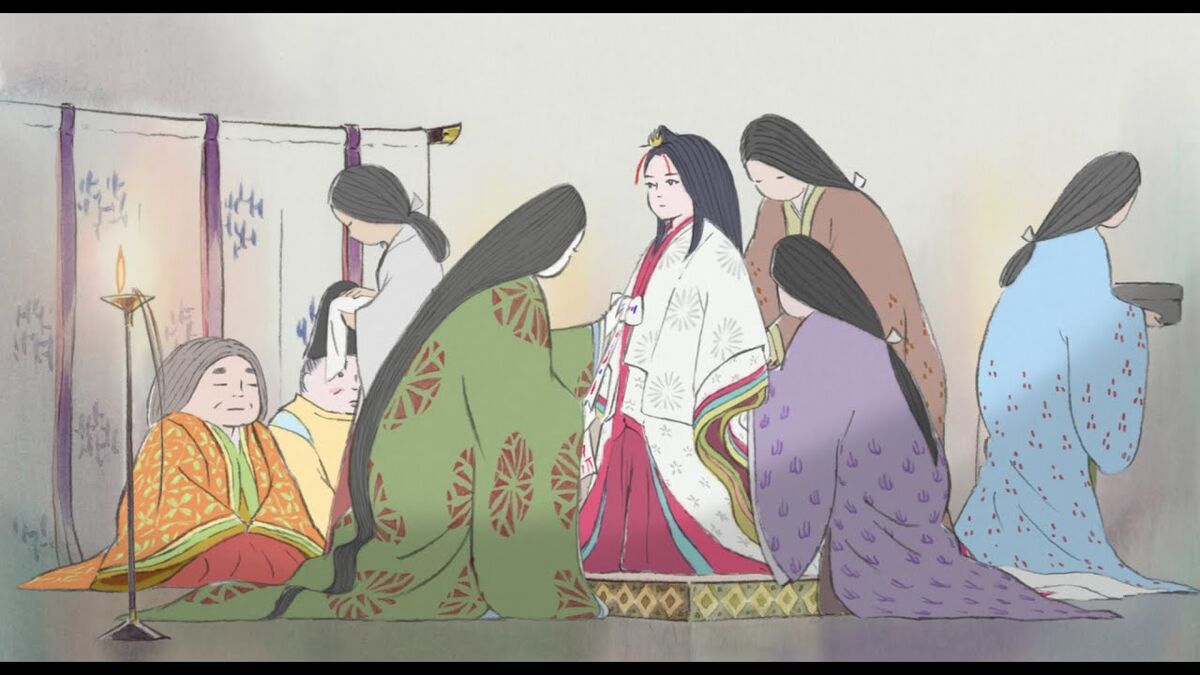
But unlike Ponyo, she doesn’t rebel. She actually cares about her parents’ happiness and most of the decisions she makes revolve around pleasing them, her father in particular. Once in the capital, she takes on the name of Princess Kaguya, but nothing about her screams princess. Kaguya behaves like a wild child in the mansion, tossing fine fabrics in the air, crawling after kittens on the ground, and climbing up and down railing. It’s clear that Kaguya prefers the freedom of outdoors to the lonely life of a princess.
However, even though she’s unhappy, Kaguya can’t bring herself to tell her father how she really feels. The tug of war that Kaguya experiences–the battle between what she wants and what her father thinks is best for her– is one we all can relate to. But ultimately, Kaguya’s decision to constantly sacrifice her own happiness leads her to make a choice that changes the trajectory of her life and her relationship with her parents forever. It’s the type of selfish decision that a person makes when their back is up against the wall, and even though Kaguya comes to regret, you can’t help but be proud of her for thinking of herself. The consequences of this act teach Kaguya a valuable lesson–life is full of ups and downs, but that’s what makes it worth living.

While there’s no wrong way to be a heroine, the strength of Ghibli’s heroines lies in their diversity. Some are selfless and brave and courageous and others are meek and timid with a big heart. No two Ghibli heroines are the same and that’s what makes them unique. We can see a little bit of ourselves in all of them because the studio doesn’t just create characters from thin air, they draw inspiration from actual people. There’s no cookie-cutter, one size fits all archetype–they’re all different and nuanced because they’re normal girls. They’re not perfect. They have flaws. They make mistakes. And we wouldn’t have it any other way.
Studio Ghibli movies are available on Max.
This is an updated version of an article first published May 18, 2020.
Related